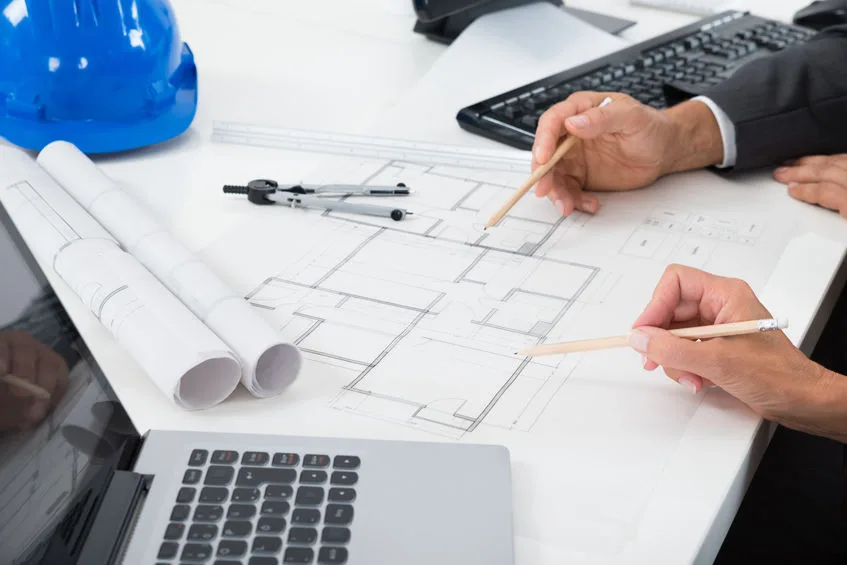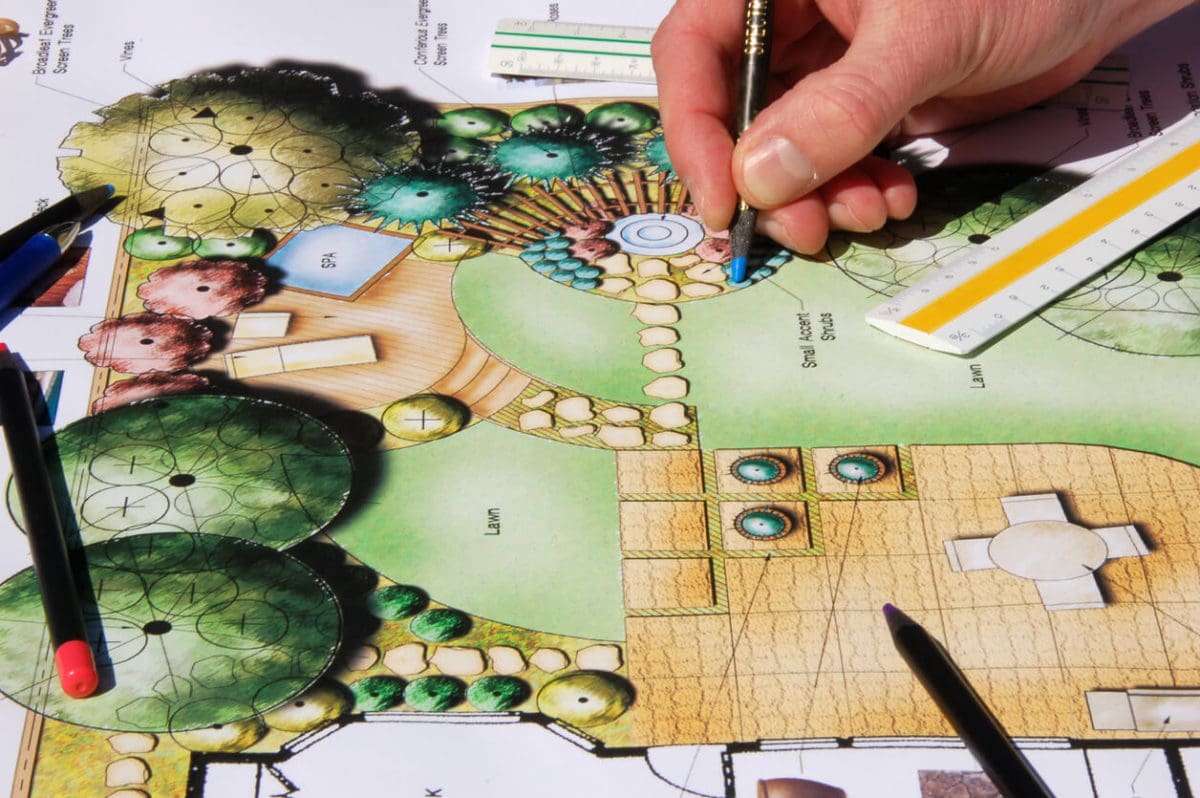Architect Salary Overview by City and Experience
Architect Salary Overview by City and Experience
Blog Article
Understanding the Diverse Occupation Paths Available for Aspiring Architect
As an aspiring Architect, you have a world of occupation paths waiting for you. Whether you're attracted to typical design or the nuances of sustainable style, there's a particular niche that aligns with your rate of interests.
Standard Architecture: Designing Structures and Frameworks
Standard style concentrates on developing buildings and frameworks that mix capability with aesthetic appeal. As you discover this area, you'll appreciate the detailed equilibrium between type and objective. You'll find out to attract inspiration from historic designs, integrating components like symmetry, materials, and craftsmanship. Your designs can reflect cultural heritage, showcasing local traditions while meeting contemporary needs.
You'll develop skills in composing, model-making, and website evaluation, enabling you to visualize and communicate your concepts effectively. Engaging with customers, you'll need to understand their vision and translate it right into feasible designs.
Furthermore, developing codes and sustainability methods are necessary in your job, ensuring your structures are secure and environmentally friendly. As you expand in your occupation, you'll discover possibilities in household, business, and even remediation tasks, each offering unique obstacles. Accepting standard design leads the way for a satisfying profession that admires the past while shaping the future.
Urban Preparation: Forming Areas and Public Spaces
As an ambitious Architect, you can play an important duty as an urban organizer, changing just how communities operate and communicate. By employing community involvement strategies, you'll assure that residents have a voice in forming their environment. Plus, incorporating sustainable style concepts will certainly assist produce spaces that not only fulfill today's needs however additionally safeguard the future.
Function of Urban Planners
While many might assume of engineers as the single enthusiasts behind buildings, urban planners play a vital role in shaping the more comprehensive landscape of areas and public areas. By working together with various stakeholders, you'll aid make parks, transport systems, and domestic areas that advertise social communication and availability. Your competence in spatial style and community characteristics permits you to imagine future growth while maintaining social heritage.
Neighborhood Engagement Strategies
Effective area involvement methods are crucial for city organizers to assure that the voices of residents are listened to and valued in the preparation procedure. To foster purposeful discussion, you need to focus on open online forums and workshops where neighborhood participants can share their ideas and problems. Usage surveys and social media sites to reach a broader target market, making sure varied perspectives are included. Teaming up with neighborhood companies can boost depend on and facilitate much deeper connections. It is essential to provide clear info concerning proposed jobs and decision-making procedures, allowing locals to feel enlightened and empowered. By actively paying attention and incorporating responses, you'll create areas that mirror the community's needs, eventually leading to more lasting and successful urban atmospheres. Welcome openness and continuous dialogue for long lasting influence.
Lasting Layout Principles
When creating city spaces, integrating lasting design concepts is essential for developing settings that prosper both ecologically and socially. You ought to start by focusing on power effectiveness, utilizing products that minimize waste and promote recycling. Consider incorporating environment-friendly rooms, like parks and yards, to enhance biodiversity and boost air top quality. Promoting walkability and public transport can minimize dependence on autos, cultivating a much healthier neighborhood.
Creating with water preservation in mind is also essential-- assume concerning rain yards and absorptive surfaces to manage stormwater. Including neighborhood members throughout the planning procedure guarantees that the areas you produce fulfill their requirements and encourage social interaction. By welcoming these principles, you'll contribute to vibrant, lasting metropolitan landscapes that profit every person.

Landscape Style: Producing Sustainable Outside Atmospheres
As you discover landscape architecture, you'll find crucial layout concepts that develop useful and attractive exterior rooms. Sustainable techniques play an essential role in making certain these settings prosper while decreasing ecological impact. Plus, you'll locate a selection of job possibilities that enable you to make an actual distinction in exactly how individuals connect with nature.
Layout Principles in Landscape
Understanding design concepts in landscape architecture is important for creating sustainable outdoor settings that integrate with nature. You'll need to contemplate components like percentage, equilibrium, and range to guarantee your layouts really feel cohesive and inviting. Additionally, pay attention to seasonal adjustments, making with products that match the surroundings year-round.
Sustainable Practices Review
Lasting methods in landscape architecture not only concentrate on aesthetics yet additionally focus on environmental health and source preservation. By integrating native plants, you boost biodiversity and minimize the need for chemical plant foods and i thought about this pesticides. Executing reliable watering systems helps preserve water and reduces runoff, securing close-by ecosystems. You can make spaces that advertise soil wellness, such as utilizing natural materials and exercising permaculture principles. In addition, incorporating environment-friendly facilities, like rainfall gardens and permeable sidewalks, aids in stormwater monitoring and decreases city heat. You contribute to a healthier earth and provide areas that cultivate community connection when you develop outdoor atmospheres with sustainability in mind. Inevitably, these practices assure your designs profit both individuals and the environment for many years ahead.
Profession Opportunities Exploration
With a strong structure in lasting practices, landscape style uses a variety of job courses that allow you to make a purposeful effect on the environment. Urban organizers typically collaborate with landscape architects to develop environment-friendly spaces in metropolitan settings, improving city livability. If you're passionate concerning education and learning, consider ending up being a landscape style teacher, motivating future generations.
Lasting Design: Concentrating on Eco-Friendly Practices
As you discover your profession in style, accepting environmentally friendly practices can establish you apart in a competitive area. Sustainable layout concentrates on producing buildings that lessen environmental influence while improving owner well-being. By including renewable products, energy-efficient systems, and lasting building methods, you'll add to a greener future.
Beginning by acquiring understanding of eco-friendly certifications like LEED or BREEAM, which can bolster your credentials. Consider how all-natural light, ventilation, and thermal efficiency can enhance layout. Work together with my blog engineers and ecological specialists to introduce services that minimize waste and preserve sources.
Do not neglect the importance of community involvement-- engaging local stakeholders can motivate layouts that harmonize with the setting. As customers increasingly prioritize sustainability, your competence in environment-friendly practices will certainly not just attract projects yet also satisfy your interest for accountable architecture. Accept this crucial element of the career, and watch your profession grow.
Historic Preservation: Securing and Restoring Social Heritage
While you commence on your architectural journey, consider the crucial role of historical preservation in maintaining our social heritage. This area focuses on the protection and repair of significant buildings, sites, and structures that tell the stories of our past. By taking part in historical conservation, you'll aid guard the building heritage that shapes area identification.
As a historical preservation Architect, you'll examine historic value and analyze the problem of frameworks. You'll work very closely with historians and conservationists to ensure genuine restoration strategies are used. This career path enables you to blend creativity with research study, enabling you to design remedies that appreciate initial products and craftsmanship.
Your job not only adds to sustainability by recycling existing buildings however additionally fosters a feeling of pride within communities. Welcoming this path will certainly assist you become a guardian of background, preserving the stories and aesthetic appeals that enrich our lives.
Inside Style: Enhancing Indoor Spaces
Historical preservation and indoor architecture both share a dedication to enhancing the constructed setting, yet they focus on different elements. While historical conservation highlights preserving a framework's historic and cultural value, interior style absolutely nos in on maximizing interior areas for functionality and visual appeals.
As an ambitious Architect, you'll find that interior architecture enables you to mix creativity with technological abilities. You'll develop spaces that not just look good yet additionally promote convenience and performance. This area entails understanding exactly how light, color, and products interact within an area, affecting state of mind and usability.
You'll function on different jobs, from domestic homes to industrial workplaces, making certain that each setting fulfills the requirements of its residents. By prioritizing individual experience, you can transform interiors right into functional and inspiring rooms, making a considerable influence on exactly how people interact with their surroundings. Accept the possibility to improve indoor settings and shape the way people live and work.
Industrial Style: Combining Capability With Appearances
Commercial design plays an important role in developing items that perfectly blend visual appeals with functionality, ensuring that what you make use of daily is not just aesthetically appealing yet likewise practical. As an ambitious Architect, you can engage yourself in this area, focusing on making whatever from furniture to customer electronics. Your job includes recognizing individual needs, products, and manufacturing processes, permitting you to produce cutting-edge options that enhance daily experiences.
In commercial style, you'll often work together with makers, designers, and marketers, making sure that your styles are not just attractive yet additionally feasible. You'll find out to balance form and feature, focusing on functionality without sacrificing style. By developing your abilities in mapping out, 3D modeling, and prototyping, you'll be well-appointed to bring your concepts to life. This profession path provides a vibrant setting where creativity satisfies usefulness, making it a gratifying option for designers thinking about forming the items of tomorrow.
Frequently Asked Inquiries
What Educational Accreditations Do I Need to Become an Architect?
To come to be a designer, you'll need a professional level in architecture, normally a Bachelor's or Master's. Additionally, you'll need to complete a teaching fellowship and pass the Architect Enrollment Assessment to practice legitimately.
Are There Qualification Demands for Different Building Career Paths?
Yes, there're qualification needs for numerous architectural courses. Architect. You'll require to pass examinations, full teaching fellowships, and occasionally go after specialized training, depending upon your picked focus, like landscape style, urban layout, or historical preservation
What Software Skills Are Essential for Designers Today?

Just How Can I Gain Practical Experience While Examining Style?
You can get practical experience by interning at building companies, joining he has a good point layout competitions, offering for community jobs, or teaming up with schoolmates on real-world jobs. These possibilities improve your skills and develop valuable links in the sector.
What Work Opportunities Exist Outside Conventional Style Firms?
You can discover various task chances outside typical architecture firms, like urban planning, interior design, landscape style, building administration, property advancement, and even roles in sustainability consulting. Each offers distinct obstacles and rewards.
Whether you're drawn to typical architecture or the nuances of sustainable style, there's a specific niche that straightens with your interests.When creating urban areas, integrating lasting style principles is essential for developing settings that grow both environmentally and socially.As you check out landscape architecture, you'll discover vital layout principles that develop gorgeous and useful outside spaces.Recognizing layout concepts in landscape style is essential for creating sustainable outdoor environments that harmonize with nature.In industrial design, you'll frequently collaborate with makers, marketing professionals, and engineers, making sure that your styles are not only beautiful yet additionally practical.
Report this page